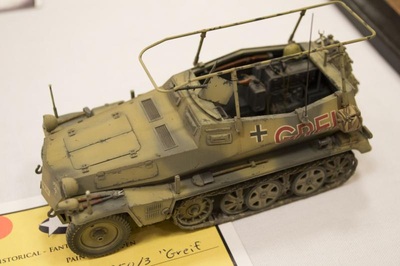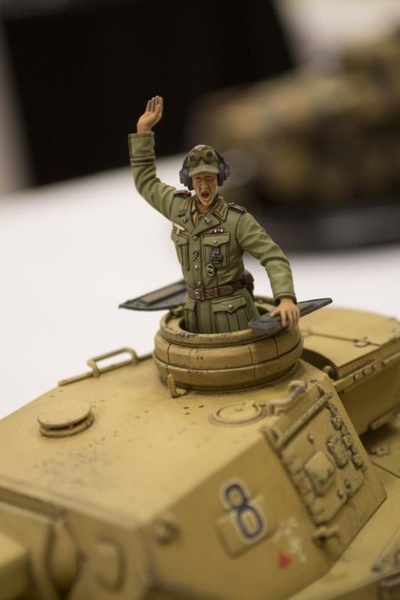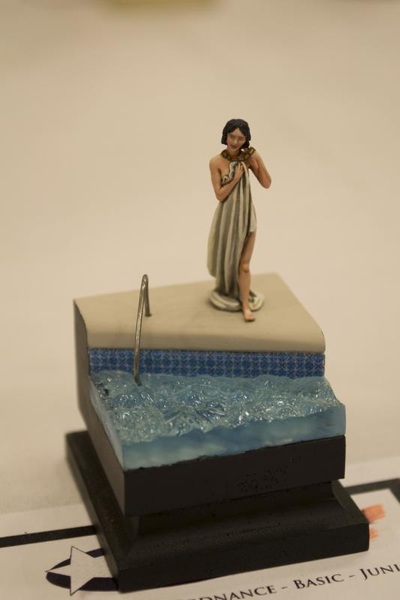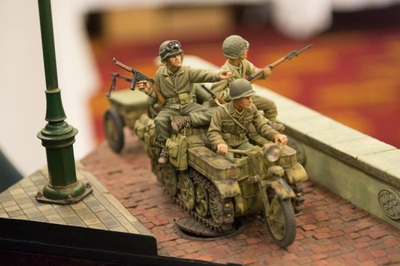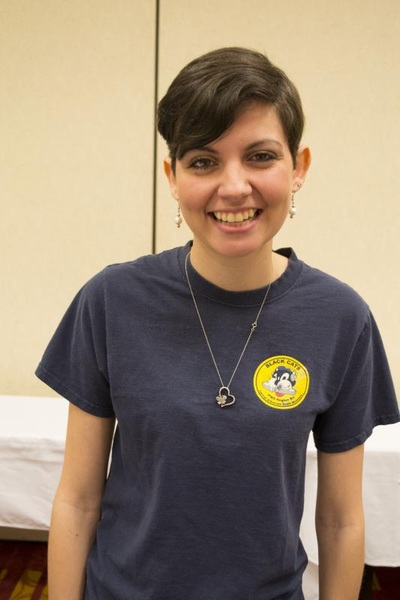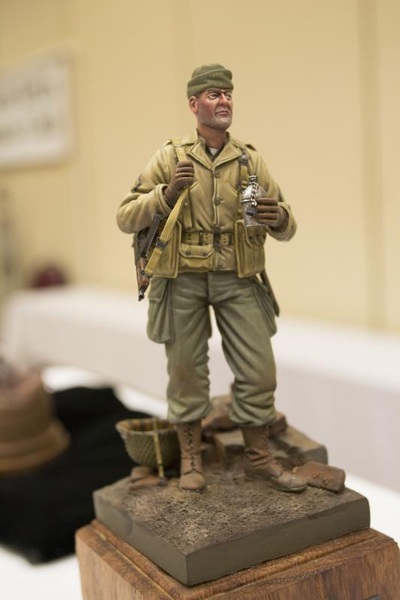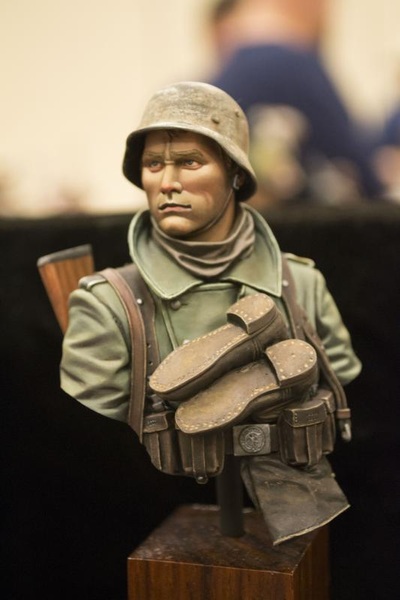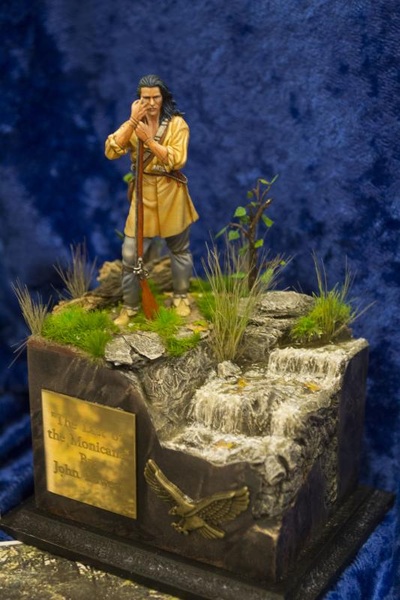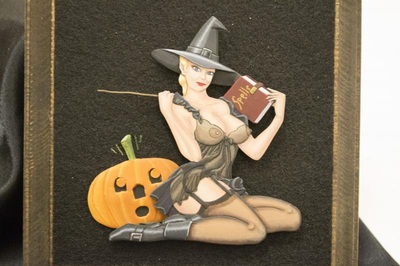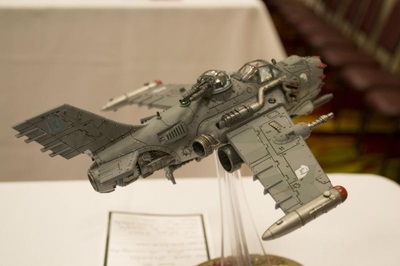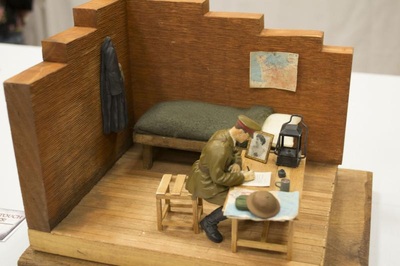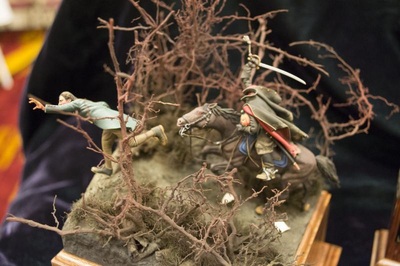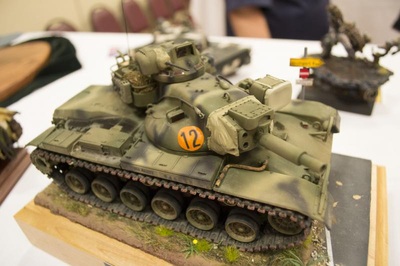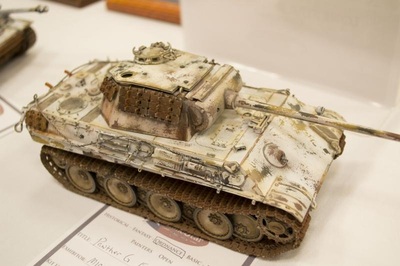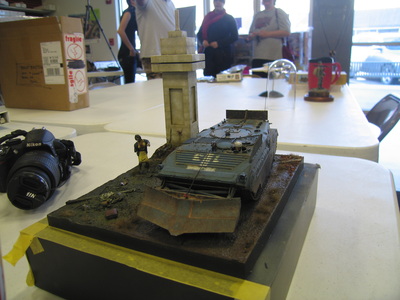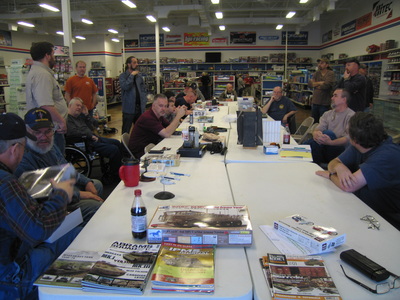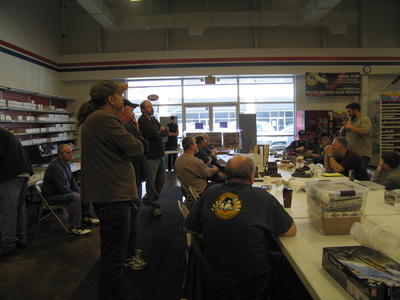|
Yesterday Rusty, Brianna and Myself returned from Dallas Texas where we attended the Lone Star Figure Show. Brent Bristow sent along a couple of his figures for proxy entries.
We drove up Friday evening arriving about 11:30pm. The show had actually begun Friday morning. Not being able to resist, Rusty and I headed up to the hospitality suite and chatted with a couple of guys still hanging around up there. Saturday morning we headed down to get our models registered. Rusty was there as a Grex airbrush rep for the HobbyTown USA in Dallas. He spent most of his day convincing people to buy brushes… which they did!... a LOT of them. The vendor area was small but still plenty to browse and buy. What they lacked in number of vendors they made up for in quality. The model room was well laid out and of course every table was on risers so there was no need to stoop. One could examine all the models up close while standing up right. There were about 275 entries with a good mix of historic and fantasy subjects. The ordnance category, which is anything without legs pretty much, was also well represented with cars, tanks, aircraft and Warhammer subjects. The quality of work was, for the most part, very high. Modelers from all over the country had come to enter. There was also a sizable group that traveled with the Andrea crew from Spain. They made the awards they gave out. Anders Heintz sculpted the masters and resin copies were cast and painted gold, silver or bronze. The specialty awards were also made. In the end all three of us that entered garnered awards: Rusty got a Gold in fantasy painters category for his Bat Creature. Brent received a Bronze in fantasy painters for his recent Cabinet of Dr. Caligari I was fortunate enough to get Silver for my Welcome to India diorama in the fantasy open category. Saturday night we all had dinner at a rather shady Mexican restaurant then spent many hours talking with other modelers in the hospitality suite. I think we shut it down about 230 am Sunday morning. I want to give a special thanks to my wife Brianna who spent a lot of time talking to vendors and contestants inviting them to our show in Sept. I spoke to many of them later and a lot of folks were genuinely eager to visit the SprooDoo contest. I very much look forward to going back to the Lone Star figure show next year! Modelers who have been sticking bits of plastic together long enough know that today’s model kits are more elaborate, better detailed, (and more expensive) than ever before. Still, most experienced model builders can usually find ways to improve even the best of styrene offerings. Whether they use plastic strip or rod, photo-etched brass, resin parts, parts from other kits, or something else, it’s not uncommon for a modeler to examine a kit and think, “Hmm, there are some details missing,” or “that part doesn’t look quite right,” or some such. Once a kit has been scoped out, and often after some research has been done, the question becomes, “What do I need to add or change?” The answer to that ranges from the “rivet-counting” response—that absolutely everything about the finished model must be correct—to the laid-back attitude that a box-stock effort will suffice. Most modelers start the hobby as kids, and at that point, a model that closely resembles the real thing is good enough. If the model comes molded in the correct shade of styrene, so much the better! As we grow older, though, we become more demanding. The excellence of modern kits has a lot to do with that; we have come to expect more from a model. The majority of grizzled model-building veterans come to a verdict somewhere between rivet-counting and building straight from the box. But how do we decide what things simply must be “fixed,” and what deficiencies can be left alone? Modelers are as varied in their thinking as the rest of humanity (well, probably so), and their approaches to achieving accuracy are practically infinite. Some common factors in deciding what to do or not do to a model can be identified, however. First, there’s the issue of how bad an error or omission in a kit is. Some things just scream to be corrected. Then there’s the consideration of how much effort, time, and skill it will take to make a kit right. Cost can be a consideration. Some lucky modelers can shell out big bucks for after-market goodies without blinking an eye; others build on a budget. And quite frankly, honest modelers will admit to wondering on many an occasion, “Will anyone even notice if I don’t add these gizmos, relocate these doodads, or fix that dimensional error?” If we’re building for personal satisfaction, we may conclude we can do without the gizmos; if we plan to enter our effort in a national contest, our answer will likely be different. Having recently wrestled with a couple of 1990s-vintage kits, your author has had to make decisions about things to correct, add, etc. My decisions were based primarily on how important I thought it was to do certain things to the models; whether or not I thought I had the parts, materials, and/or the ability to make needed fixes; and sometimes on how much I wanted to spend. In one instance, I decided I just had to have some pretty high-priced after-market tracks for a tank. Otherwise, I raided the spares box to add missing items or to substitute better-detailed parts. Some of the simpler items I made myself. There was another element I noticed while doing all the adding and correcting to make these models better replicas of the real things. Doing all that fixing is simply fun! There is a certain satisfaction to taking a so-so model kit and making it look good (at least to the builder’s eyes). Even if others don’t know or don’t appreciate all the things done to make a model more perfect—and I don’t believe in modeling things that will never be seen—that satisfaction is still there. So if you are a model-builder feeling that a certain something is lacking in constructing some of these marvelous modern kits that leave not a lot of room to make corrections, you may want to think about going retro. Dust off one of those older kits that’s been languishing in a dark closet, get the tools ready, crack open the spares box, and enjoy being a “Mr. Fix-It”! Editor's Note: Rick has provided an article for the Scratching Post (see above) that discusses the joys of upgrading an older kit that he explained during the club meeting.
|
Archives
February 2017
|






